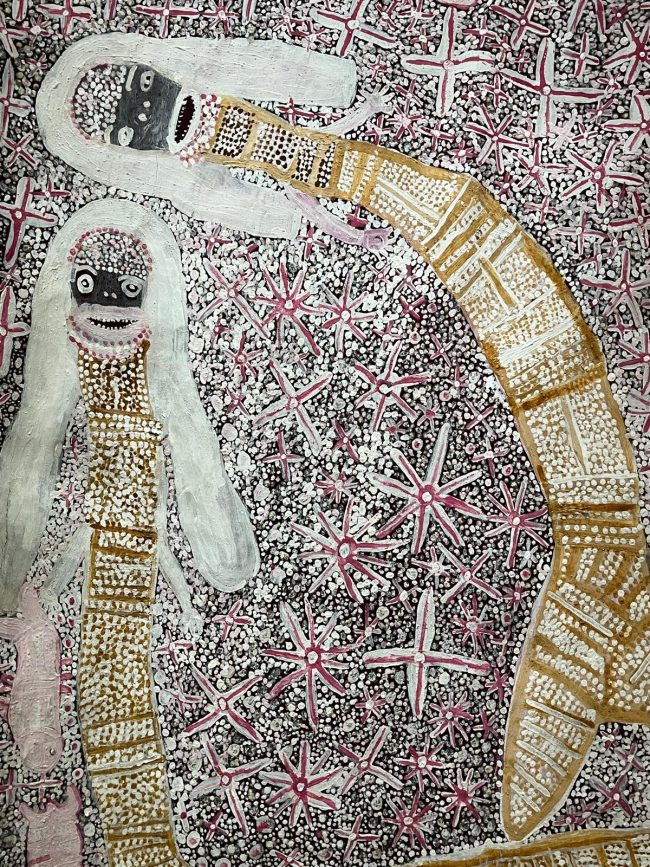
21 June – 6 October 2025
Art Gallery of New South Wales
Naala Badu building
Lower level 2
Review by Anthony Frater (Arts Wednesday)
Just when you thought you’d seen it all in relation to an indigenous fine art exhibition, along comes the AGNSW with Yolŋu power: the art of Yirrkala. From the 1940s to the present, works have been drawn from both public and private collections from around the country – about 300 in all makes this a large survey exhibition from one of the country’s first indigenous art centres based in north east Arnhem Land, Northern Territory.
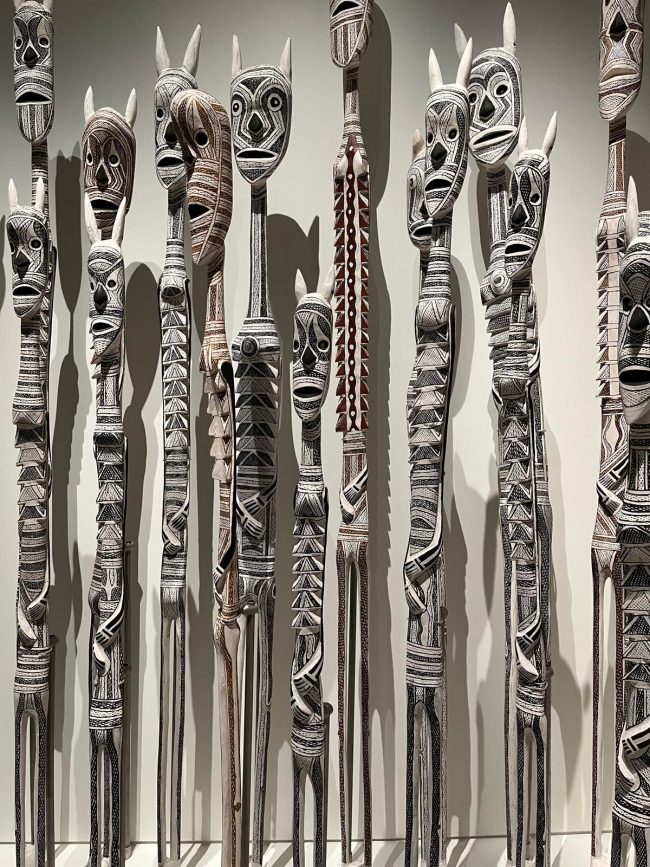
The curatorial work is what you would expect from one of the country’s largest State galleries, but it’s the obvious physical presence of the artworks that hits you first. It’s hard not to be thrown into a state of meditative silence; a cathedral like ambiance, mesmerised by the painstaking detail and in some cases astonishing depth of field and perspective – like a star filled solar system, the natural earth pigments, the variety of media, the subject matter, time honoured motifs such as dots, cross hatching or Raark, intertwining lines and a labyrinthine maze of geometrical shapes, and mesh like lines made all the more possible by the marwat: a type of fine human hair brush made by hand and exclusive to north-east Arnhem Land.
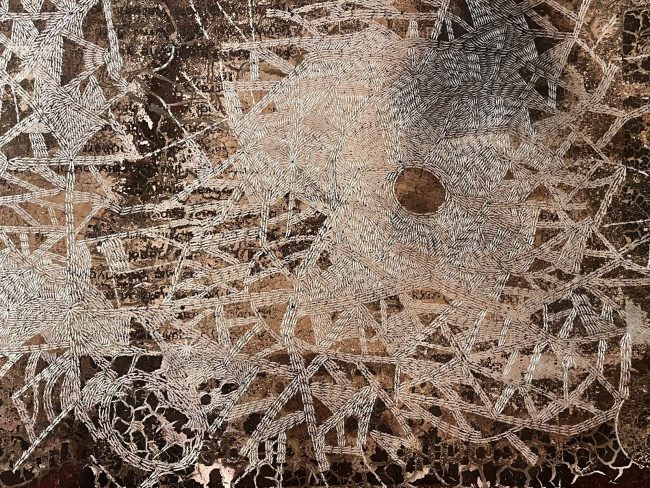
From natural ochre pigments on bark, wood, paper or board, to totemic sculptures, colourful printed works, etchings on metal, stunning audio visual video installations – head down to the ‘tank stream’ and enter an extreme sensorial other world – and even, which must be a first, but perhaps not,Yirrkala artists are using synthetic polymer paints, something we would usually see in paintings from Papunya Tula in the Western Desert.

The works for the most part tell the stories and history of the clan, stories based around an inherited right of the artist to produce the work in what is seen as a continuance of not just a history but a forebear’s legacy: embedded songlines and ceremonial designs, patterns and subject matter emanating from the community as a whole but most importantly the artist’s own immediate ancestry, a familial signature identity which when kept alive, spoken about and repeated ensures life everlasting for the deceased elder, the teacher and seer – a variation on a theme common enough to many cultures throughout the ages. These pictorial histories, are, as the gallery says, a form of “cultural diplomacy…a respectful assertion of power in its diverse forms, from sovereignty to influence, authority, and control, to energy, strength and pride”.
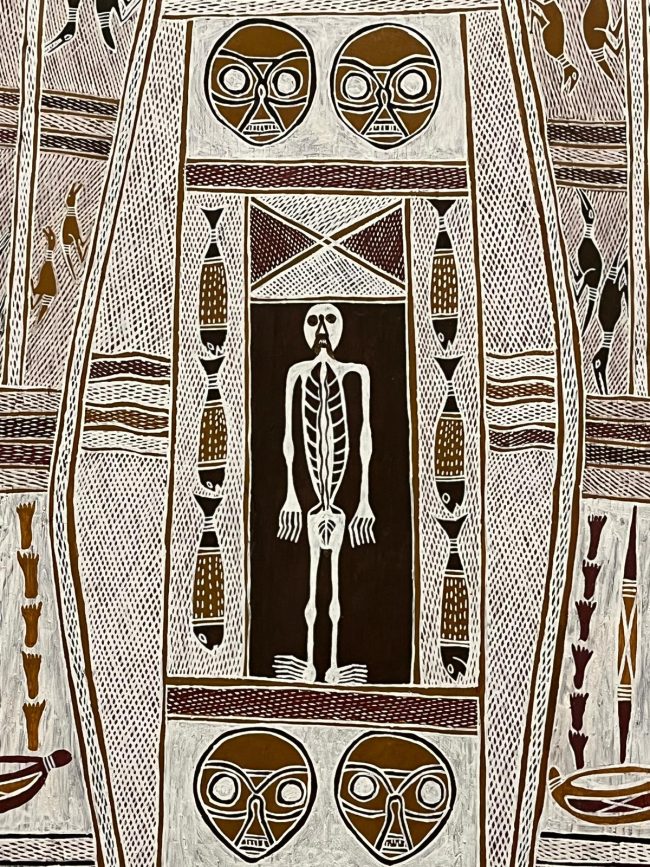
Subject matter is all important: imagery and pictorial schemes that represent everything from history and politics, food, ritual and law, to religion, land, the cosmos and the spirit world – and if being religious or spiritual means also an enduring connection and commitment to land and the cosmos, understanding it, then all bases are most emphatically covered here, they are all intrinsically linked, you don’t have one without the other. These works are a time honoured meditation upon all that surrounds them, what went before but also a prediction of what might yet be to come. As Djambawa Marawili says, “we are caring for the oldest living culture on earth, and we are the only people qualified to look after this global inheritance…these are not just words about a distant, imagined past, this is reality”.
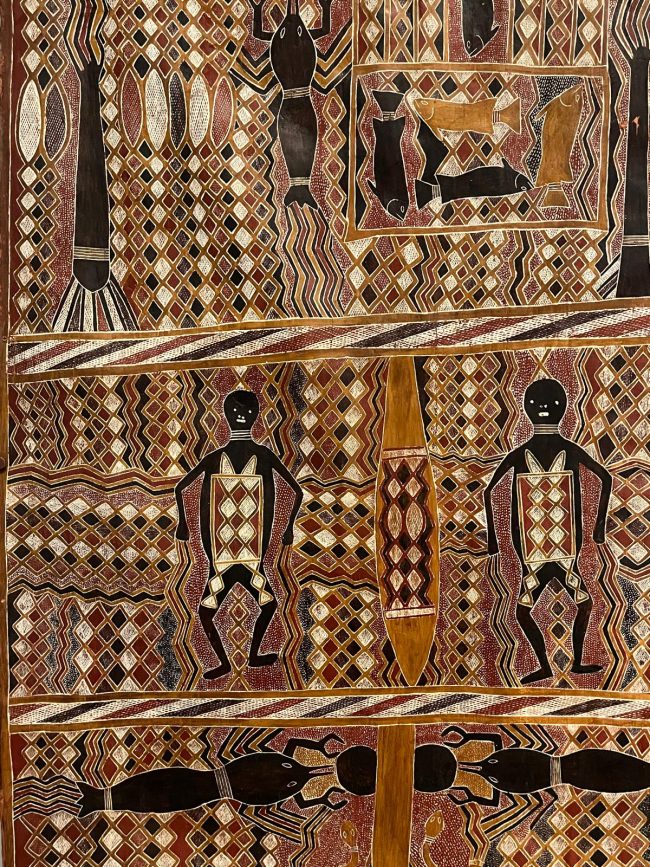
These artists are passionate about bringing their work to an eager audience, for all to see and learn about what they might have to say. The last word is best left to artist Binygurr Wirrpanda, who says, “The designs and the songs, it comes from our body, it comes from our minds, it comes from the ground. This is where our power comes from. Each clan has its own essence and its own energy coming through its own identity, when all these seperate powers combine into one infinite universal whole expressing all the facets of creation this is the true Yolŋu power. This power is coming to us from the past, it has been brought to us by our old people. It is flowing through each generation and getting stronger each time it is passed on“.
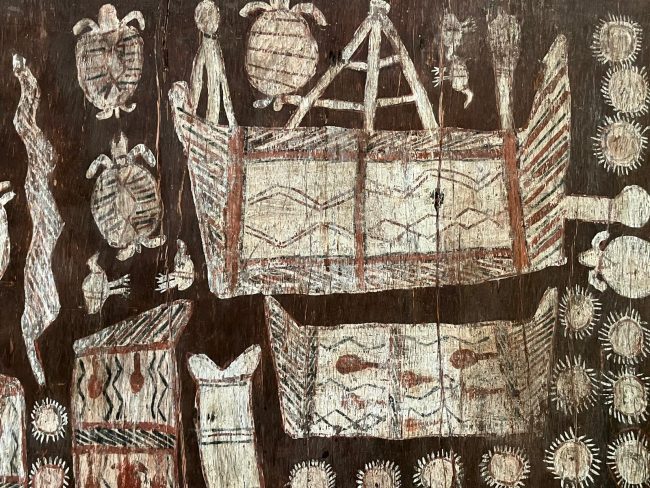
Finally, and if you thought that wasn’t enough, from Sunday 6 July, to Sunday 13 July, the gallery will be hosting a range of events as part of the NAIDOC (National Aboriginal and Islanders Day Observance Committee) week celebrations. NAIDOC Week has its roots in the 1938 Day of Mourning, becoming a week-long event in 1975. Celebrations are held right around the country and the gallery will be hosting a number of incredible happenings – one that features King Stingray.
Hear the interview below with Liam Keenan, Assistant Curator First Nations art at the Art Gallery of NSW, who tells us all about what’s going on during the week long festivities.